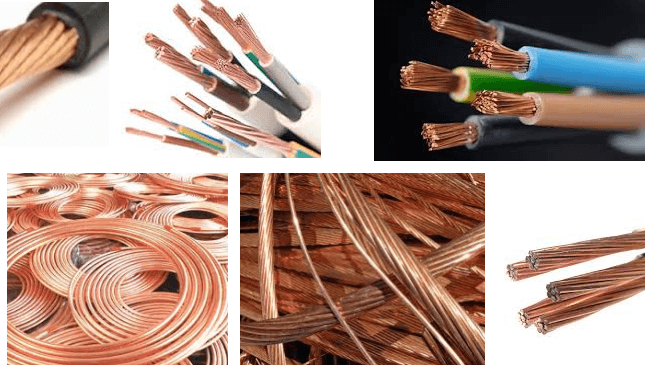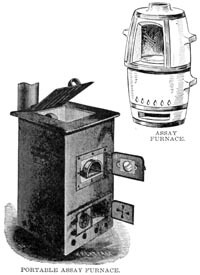Factors Affecting Copper Electrical Conductivity

One of the properties of copper, which has done much to give it its present prominent place among the useful metals, is its electrical conductivity,—a property which has now become the chief criterion of the value of the commercial product. In pursuance of that distinctively American principle that, “ the best is none too good,” […]
Effect of Silver on Chlorination & Bromination of Gold
When dry chlorine gas is made to act in the cold upon finely- divided gold, it converts the latter with evolution of heat into auro-auric chloride, Au2Cl4, a hard, dark-red, hygroscopic salt. Moisture splits this salt into aurous and auric chloride, Au2Cl4 = AuCl + AuCl3 ; treatment with water converts it into auric chloride […]
Vanning Buddle Concentrator
I tested an ore, which was peculiarly difficult to treat, on several concentrators then in general use, including the Frue-vanner, the Luhrig table and the Cornish buddle. Owing to the character of the ore it had to be crushed- to a very fine state of division, and the results obtained were far from satisfactory; a […]
Refining Zinc Precipitates: Cyanide Leaching of Gold & Silver Extraction
Attempts to discover, for the cyanide process, a better precipitant than zinc have been unsuccessful. Hydrogen sulphide, sulphurous acid, ferrous sulphate, etc., precipitate gold and silver from cyanide solutions either not all or incompletely. Aluminum has been tried, but it costs too much, and cannot be used in solutions containing lime. Charcoal has been used […]
Sulfuric Acid Resistant Alloys
“At-a-glance” corrosion chart for sulfuric acid is based on an extensive survey of construction materials; gives rough indication of suitable alloys. A variety of methods have been proposed many are used for the presentation of corrosion data in concise form. The authors are basically opposed to the presentation of information in simplified chart form if […]
Copper Refining: Explained Step-by-Step
In refining copper, the metal is melted down in a reverberatory furnace in a more or less oxidizing atmosphere and then further subjected to an oxidizing smelting in order to eliminate the common impurities, most of which have a stronger affinity for oxygen than has copper. In these operations some of the copper is oxidized […]
Ore Sampling

This paper is intended partly as a summary of the conclusions that have been arrived at by various authorities on this matter, and also with a view to initiate some discussion on the subject, especially as most of the quartz gold mines in Victoria are operated without having any proper assay plans or any idea […]
DIY Portable Fire Assay Furnace

In the early stages of opening up a mine, when there is some uncertainty as to its future career, necessitating caution in laying out works of a permanent character, the want is often felt of an assay furnace, easily built and easy, of transportation, should the “ mine ’’ prove to be “ no mine.” […]
Free Milling Gold Laboratory Testing
Friends often ask how accurate the work of our little stamp-mill is, or express the opinion that a little mill cannot do good work. As a reply we would like to place on record the results of a few tests. There are two periods of work in our laboratory; the fall term, when the class […]
Control Corrosion in Copper Recovery Operations: SX-EW Plants
Stainless Steel Offers Many Advantages for containing strongly acidic leaching reactions in copper recovery operations. Hydrometallurgical techniques for copper extraction have been known probably since 1752, but the dissolution of copper by leaching and the recovery from solution by precipitation or electrowinning did not become significant in the US until the mid-1960s. Today, hydrometallurgy accounts […]
